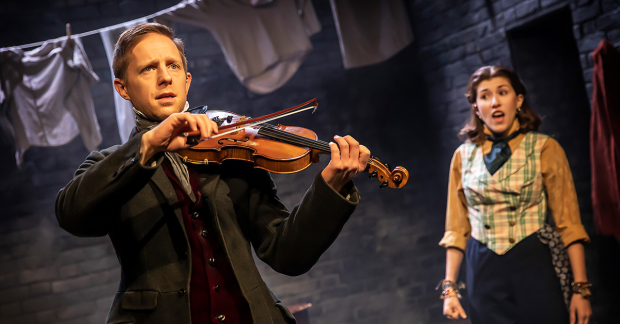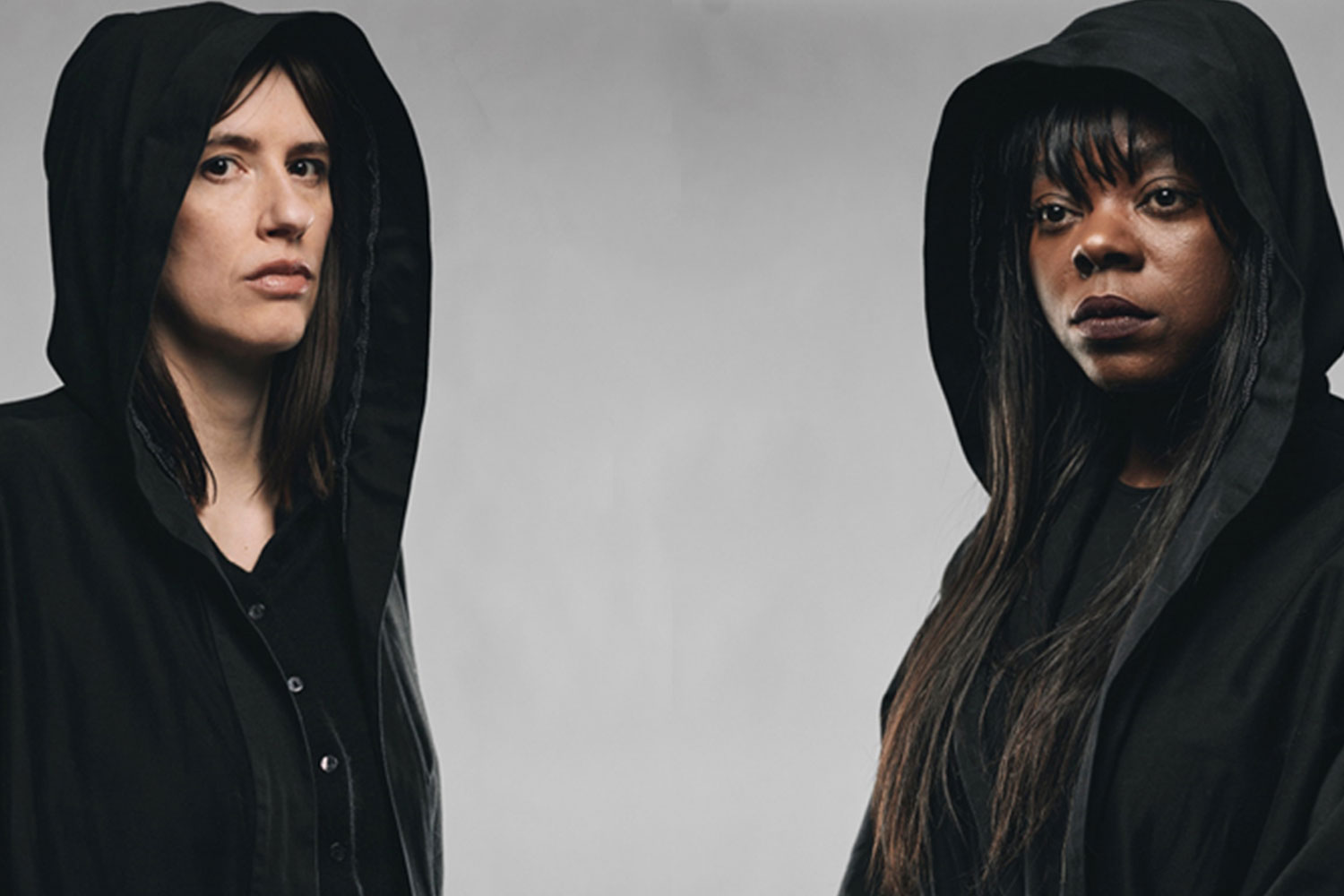Review: A Christmas Carol (Watermill Theatre)

© Pamela Raith
If ever there was one story that could encompass the hopes and fears of Christmas in the time of Covid, and at the same time provide the perfect socially distanced antihero in the terminally mean and unempathetic Scrooge, it is Dicken's much-loved morality tale. But how to conjure his teeming dramatis personae of folk from all strata of Victorian society, not to mention Scrooge's three ghostly visitors, with just two performers?
Adaptor Danielle Pearson, director Georgie Staight and their wonderfully multi-talented and versatile pair of actor/musicians Peter Ashmore and Tilly-Mae Millbrook easily prove that it's not just doable, but actually an entirely natural, desirable way to tell the story. And a story, as Pearson has her warm and eloquent narrator Millbrook declare, "is a candle in a dark place"; a candle that Dickens himself lit for audiences as he toured the UK and America with his one-man show, reading dramatically from his novels, with A Christmas Carol a year-round favourite.
To say that here you actually get two for the price of one is to wildly undersell a beautifully and carefully conceived storytelling and playing style. From the get-go, as the figure of Ashmore playing "God Rest Ye Merry Gentlemen" pizzicato on his fiddle looms on the dimly lit stage, the quartet of designer Isobel Nicholson, lighting designer Harry Armytage, sound designer Tom Marshall and costume designer Emily Barratt conspire to conjure the atmosphere of Victorian London.
It is first dimly perceived as a mysterious soundscape, punctuated by children's voices, and then revealed as Millbrook's Narrator lights that candle and invites us to look into the flame. Scrooge's desk takes centre stage, with a miserable corner to one side for his wretched clerk Bob Cratchit, while above them crowd city roofs hung with washing lines – the poor are ever-present.
Barratt's costumes play their part as Ashmore slips on the severe black frock coat that transforms him into Scrooge; and Millbrook by contrast the cheerful yellow-checked waistcoat that denotes her narrator. She will deftly transform into Cratchit with a shabby scarf and, with other similar touches, into a host of other characters both male and female in the course of the story She demonstrates her versatility in every role, while simultaneously maintaining her intimate link with her audience as storyteller.
You might expect Ashmore to stick to playing Scrooge; and indeed he makes a magnificently mean and unfeeling moneylender, hard-faced and steely-eyed as he deals peremptorily with debtors in desperate circumstances and dismisses poor Cratchit's pleas to get off early on Christmas Eve with his trademark ‘Bah Humbug'.
But the storytelling is so much more nuanced, for as Scrooge's eyes are opened by the visiting spirits of Christmas to the causes and effects on others of his life choices, he too gets to inhabit some of them, to see with their eyes. So when Ashmore takes a turn at the role of Cratchit at home at the family table, with Millbrook as his missus, it is not simply a practical directorial decision. Scrooge is at once himself and his clerk, rather than simply an onlooker at the domestic scene. He even gets a turn at manipulating the cap and crutch that so simply and eloquently evoke sweet little Tiny Tim, Cratchit's youngest and most vulnerable child.
As the spirits reveal more, Ashmore's face is a study of dawning realisation, his body language visibly relaxing, his voice softening, so that his redemption becomes a credible possibility. This is a rather younger Scrooge than is traditional. Ashmore does not age up, which subtly alters the whole dynamic of the story, for here the exaggerated playing style often associated with Dickens on stage is nuanced, just a bit more naturalistic and empathetic.
Nicholson's shadow puppetry artfully boosts cast numbers by silhouetting carol singers at a useful window. Following her turn as an expansive Spirit of Christmas Present, Millbrook deftly manipulates a looming shrouded figure, making a satisfyingly scary Spirit of Christmases Yet to Come to thrill and chill the audience from the youngest to the oldest.
Christmas carols punctuate the action, voices and instruments – fiddle, piano and woodwind – blending magically. When our joint MDs (yes, they share that role too!) finally burst into a glorious all singing, all dancing ‘Mega Mix' finale, even a socially distanced audience gets to revel in sharing the timeless spirit of Christmas.
Pearson and the Watermill Company's retelling of Dickens' story succeeds magnificently in bringing comfort and cheer at this difficult time. The great writer would surely have been proud.










